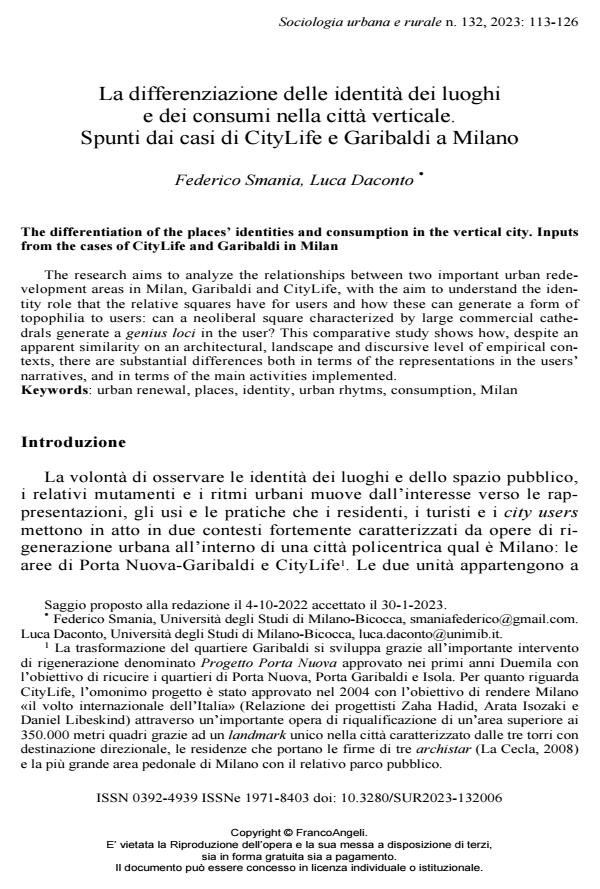The differentiation of the places’ identities and consumption in the vertical city. Inputs from the cases of CityLife and Garibaldi in Milan
Journal title SOCIOLOGIA URBANA E RURALE
Author/s Federico Smania, Luca Daconto
Publishing Year 2023 Issue 2023/132
Language Italian Pages 14 P. 113-126 File size 268 KB
DOI 10.3280/SUR2023-132006
DOI is like a bar code for intellectual property: to have more infomation
click here
Below, you can see the article first page
If you want to buy this article in PDF format, you can do it, following the instructions to buy download credits

FrancoAngeli is member of Publishers International Linking Association, Inc (PILA), a not-for-profit association which run the CrossRef service enabling links to and from online scholarly content.
The research aims to analyze the relationships between two important urban redevelop-ment areas in Milan, Garibaldi and CityLife, with the aim to understand the identity role that the relative squares have for users and how these can generate a form of topophilia to users: can a neoliberal square characterized by large commercial cathedrals generate a genius loci in the user? This comparative study shows how, despite an apparent similarity on an architectur-al, landscape and discursive level of empirical contexts, there are substantial differences both in terms of the representations in the users’ narratives, and in terms of the main activities im-plemented.
Keywords: urban renewal, places, identity, urban rhytms, consumption, Milan
Federico Smania, Luca Daconto, La differenziazione delle identità dei luoghi e dei consumi nella città verticale. Spunti dai casi di CityLife e Garibaldi a Milano in "SOCIOLOGIA URBANA E RURALE" 132/2023, pp 113-126, DOI: 10.3280/SUR2023-132006